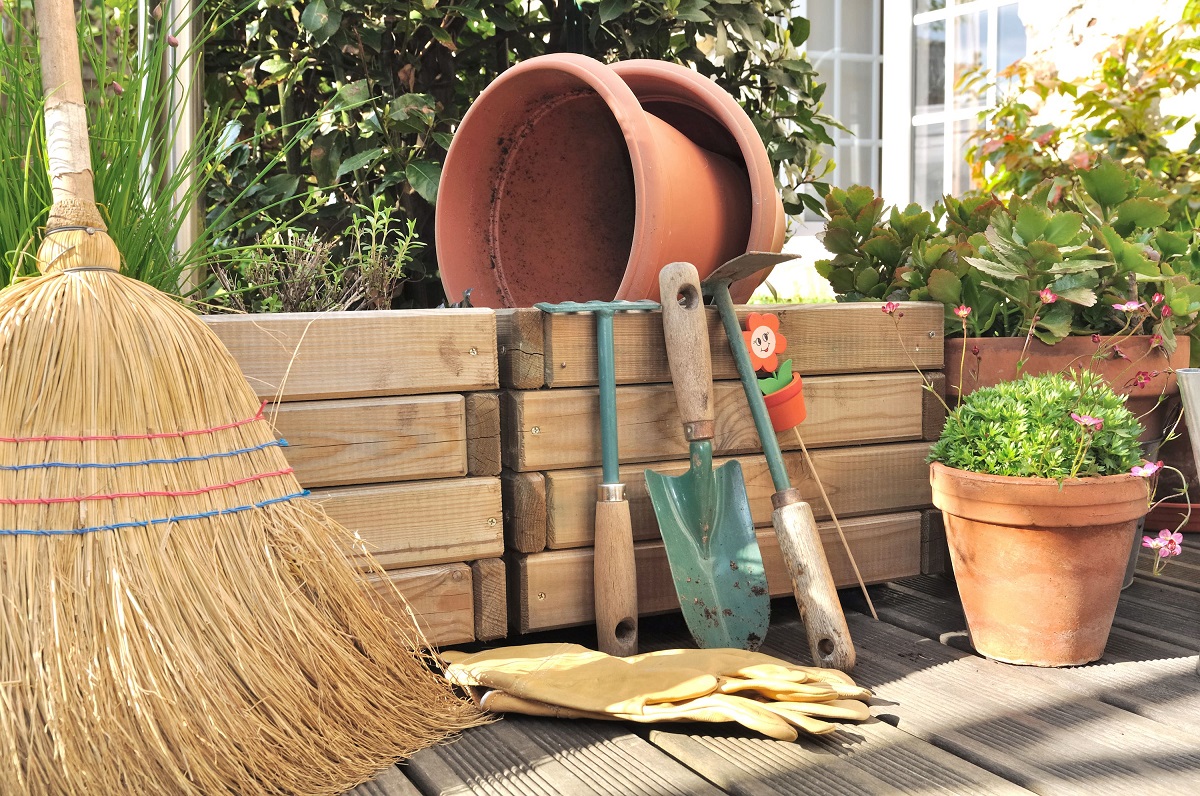Your garden will periodically need a good tidy – especially if you’ve neglected it for any period of time. It might seem like a mammoth job, but it’s really easy to get started and you’ll enjoy the results.
How to tidy your garden
Here are seven tips for tackling the job…
1. Sweep up
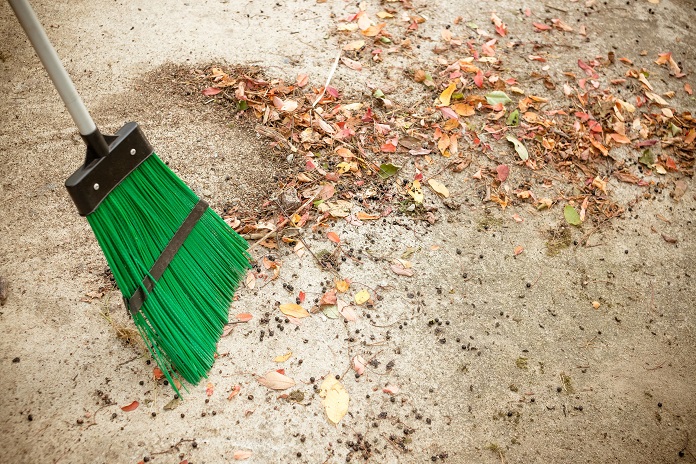
Move pots out of the way to give your patio a good sweep to get rid of dead flowers, soil, leaves and other debris that’s gathered. Don’t be disheartened if you have to do it a few times in autumn – it’s better to stay on top of it than let a pile accumulate again.
Get yourself a stiff outdoor broom to make the job easier, Amazon.
2. Sort out containers and hanging baskets
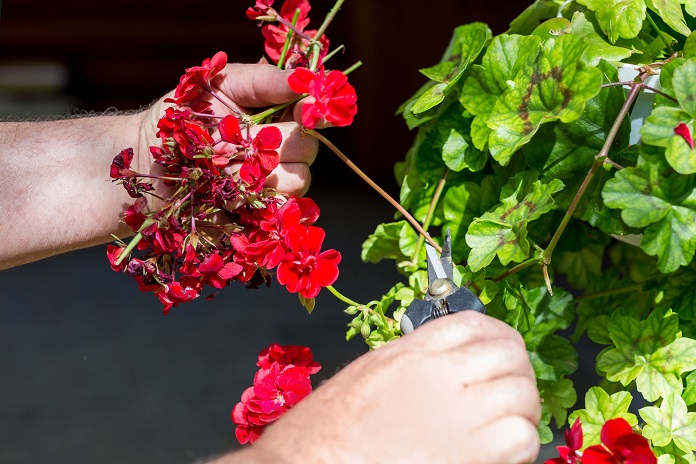
Pots or baskets containing straggly, dry annuals such as trailing lobelia and petunias are likely to beyond saving, so empty the contents on to your compost heap and start again.
You can always start to plant spring-flowering bulbs such as narcissi, and top the pot off with plants such as chrysanthemums and dahlias to keep the colour going for the time being, but make sure you use fresh compost.
Containers holding year-round-interest plants such as shrubs or evergreens may benefit from being submerged in a bucket of water to re-wet the compost, but avoid waterlogging the plants.
After re-wetting, robust architectural plants such as phormiums and box can be lifted out of their containers with their root system intact, so you can see if the compost has been completely soaked through.
3. Pick through crops
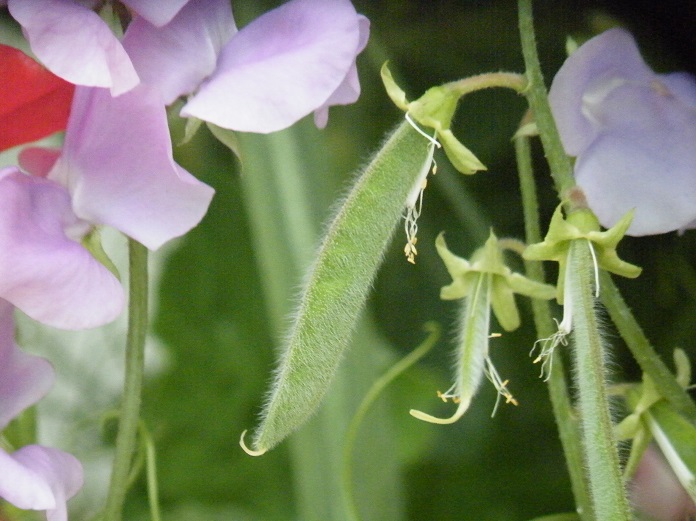
Again, if your crops have been left, your runner beans may have gone stringy, radishes will be woody and courgettes may have turned into marrows.
Old, tough, stringy beans should be deposited on the compost heap. The plants may have stopped flowering but if you want to have a go at rejuvenating them, pick all the beans off, give them a good feed with tomato fertiliser. They may, if you’re lucky, start producing again.
If there’s been little rain, tomatoes left unpicked and unwatered will be dead after two weeks, while lettuces are likely to have run to seed and will be too bitter to eat. Carrots which have run to seed should still be good for eating.
Annual herbs which have suffered in your absence can be ditched. If basil has bushed out, pinch out the tips and freeze some of the leaves in olive oil ice cubes to use at a later date.
4. Deadhead plants in borders
View this post on InstagramOh, the insanely fuzzy pods of the lupins <3 . . #lupins #lupinpods #seedpods #fabaceae #fuzzy
Cut back perennials such as lupins and delphiniums which have developed pods, and cut sweet peas for the home as well as the pods which need cutting off so the plants continue to flower.
Perennials which are still flowering should be deadheaded, watered and fed, to prolong their season, while those which have finished flowering can either be cut down or left until the spring.
Cutting them down makes for a tidy winter garden, but foliage, whether it be dead or alive, helps keep the garden warmer over winter, so it can be left if you can bear it looking a bit forlorn.
Get yourself some sharp secateurs – old blunt ones just won’t do the job anymore, Amazon.
5. Leave your lawn
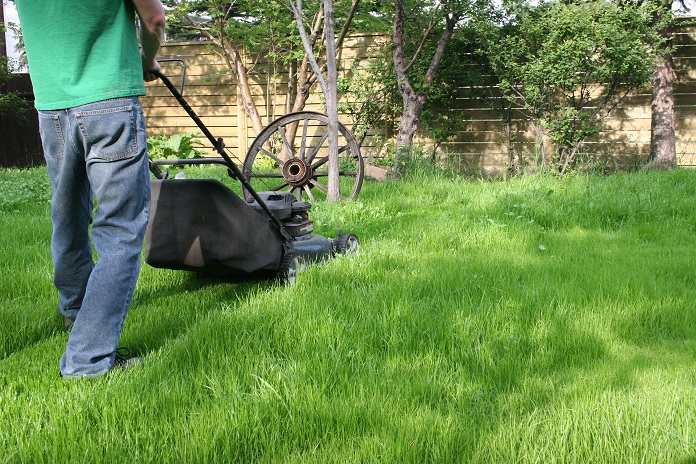
Don’t worry if your lawn is looking dry and yellow – it will recover. Lawn grasses are rarely killed by drought and recover well once the autumn rains return.
Raking and scarifying it at this stage will only make it worse. Try not to walk on it. If you do mow it, set your mower very high and give it a light trim, removing weed seedheads.
6. Perk up your pond
When you’re tidying your garden, don’t forget the pond. If blanketweed and algae have built up, covering too much of your pond, remove it with a rake or twist it around a bamboo cane to get it out. Smaller ponds may need topping up if it’s been hot and dry, but larger ponds shouldn’t.
Check your pond for foreign bodies which may have fallen in, such as birds or mice. Carefully remove and dispose of them.
7. Think ahead
Next season, if you want your flowers to last beyond August, plant some late-flowering blooms to see you through September. They’ll add some colour when plants in other areas are being lifted to make way for spring bulbs.
Echinacea (coneflowers), heleniums and rudbeckias will give you a warm autumn palette, while asters and nerines provide a pinks and soft mauve hues to the scene. Pink sedums can also be planted in borders while bold chrysanthemums in pots will perk up the patio.
You may also be interested in…
This article may include affiliate links to products and services where we may receive a small fee to support the running of this site if you make a purchase or is a sponsored article from one of our select editorial partners providing valuable advice and information to our readers.























































